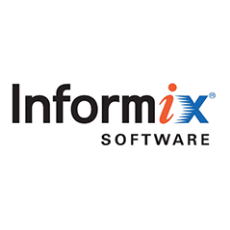Compare Products

|

|
Features * Bring NoSQL to your SQL database - IBM Informix unleashes new capabilities, giving you a way to combine unstructured and structured data in a smart way. IBM Informix offers a “hybrid” database system that is capable of supporting relational and non-relational data, giving you the ability to store JSON and relational tables in the same storage engine.
* Meet the Big Data challenges of sensor data - Informix, with its TimeSeries feature, helps organizations solve the Big Data challenge of sensor data by providing unprecedented performance and scalability to applications that leverage time series data.
* Speed and efficiency let you do more and spend less - Informix is fast. Informix was built from the ground up for performance. Higher performance means fewer servers – and less space, power, and cooling resources.
* Options, not hassles, for achieving continuous availability - IBM Informix offers the industry's most comprehensive set of high availability options that can take advantage of low-cost hardware with Informix Flexible Grid.
* Easy administration lets you maximize DBA resources - Informix software automatically senses and responds to changes without human or programmatic intervention.
* Reduce cost and risk of private cloud and distributed enterprise deployments - Helping to reduce the cost and risk of private cloud, Informix 12.1 is the only database that allows different hardware and operating systems from cluster to cluster in a distributed environment.
* Enhanced security speeds time to compliance - Organizations will have greater control over auditing practices with selective row level auditing.
|
Features * The Scylla row cache, unlike the original Cassandra cache, is designed to reconcile data in cache with incoming writes. Cassandra’s row cache invalidates the whole partition for a given table on write, but Scylla’s does not. The result is that Scylla can run mixed read/write workloads efficiently. This reduces the need for data model complexity that is only present in order to work around the Cassandra read-before-write problem. Reducing data model complexity can have the indirect result of saving storage bandwidth as well.
* Scylla does not need to parse cached data from stable format to in-memory format before serving it, because the Scylla row cache already holds data in the needed format.
* Scylla is a new approach to NoSQL data store design, optimized for modern hardware. The typical design of NoSQL data stores (left) consists of a JVM which runs on top of Linux, utilizes the page cache, and uses complex memory allocation strategies to “trick” the JVM garbage collector to avoid stop-the-world pauses. Such a design suffers from sudden latency hiccups, expensive locking, and low throughput due to low processor utilization.
* ScyllaDB networking is designed to squeeze the most out of the hardware. No different from the other Scylla components, we optimize the hell out our CPU, our memory management and similarly, the network. Scylla supports two different networking modes—our own native Seastar network stack and the traditional Linux stack.
|
LanguagesC CPP Java |
LanguagesCPP Java |
Source TypeClosed
|
Source TypeOpen
|
License TypeProprietary |
License TypeGPL |
OS Type |
OS Type |
Pricing
|
Pricing
|
X
Compare Products
Select up to three two products to compare by clicking on the compare icon () of each product.
{{compareToolModel.Error}}Now comparing:
{{product.ProductName | createSubstring:25}} X